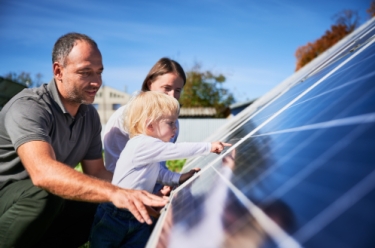If you’re a homeowner with a solar system for your property, you might already know the benefits of investing in a solar battery. But there have actually been other recent advancements in solar energy storage that have greatly boosted the potential of renewable energy in Australia.
So where are we in our race to embrace renewables and make the switch to clean energy? Let’s find out, as we outline all the groundbreaking news we’ve seen coming out of Australia’s renewables sector over the past year.
What are Renewable Energy Sources?
As mentioned above, renewable energy sources are types of energy such as solar, wind and hydro. They are called renewable because their sources of energy - the sun, wind and water, are all part of the natural ecosystem that renew themselves after usage. Whereas fossil fuels, which are traditional energy sources, are burned and then disappear, leaving nothing behind but harmful emissions that cause global warming.
While there are still some emissions associated with renewable energy, such as in the mining and development of materials to make solar panels, once they are created, they cause little to no emissions. The same applies to wind and hydro. They are also cheaper to run, maintain and repair when compared to fossil fuel power plants such as those that burn coal or gas. Furthermore, they are much safer than nuclear energy which carries a high risk factor and is also very expensive to establish.
The Evolution of Public Opinions on Renewables
Renewable energy has always been a highly charged, politicised, contentious topic. In recent years, this same hot topic issue has been debated countlessly on the floor of Parliament as well as at your local pub – and of course, in internet comment sections across the globe. Those who lean towards the more progressive side of politics and social progress have usually been advocates and in favour of renewable energy, while those who lean conservative have doubted them or pushed for more fossil fuel mining and burning.
However, in recent years, Aussie homeowners have been quick to take up solar panel installation incentives and rebates from state and federal governments because they can save money on their power bills. Solar energy is a great benefit to cutting down a power bill, especially during the peak of summer. Those who invest in a solar battery can also see longer benefits, being able to store the energy their solar panels generate and power their home even on overcast days.
The recognition of cost savings in embracing renewables seems to have been the catalyst for many Aussie consumers, and even business owners, who swap out their bottom line approach for ESG-focused triple bottom lines that take into consideration environmental performance metrics like carbon emissions. With more consumers and business owners embracing sustainability initiatives, it’s safe to say that the public opinion regarding renewables has been in a state of flux, with financial incentives greatly propelling actors to take action.
Breakthroughs in Solar Energy Storage
The last few years have seen significant breakthroughs in solar energy storage technology. Most notably, there have been some significant innovations in battery storage technology that have made solar battery storage more efficient, affordable and scalable. Some of the most notable innovations in battery technology for solar energy storage include the development of lithium-ion batteries, the type of rechargeable battery that powers electric vehicles and smart devices like IoT home and office tech.
There are other cutting-edge battery technology developments as well that may see solar batteries able to retain energy through winter, reducing the amount of grid power a home needs to draw on during the cold, overcast months. Several start-ups around the world, as well as established solar companies, are continuing to invest in solar battery storage innovations and increased capacity and energy retention.
The ongoing improvement of solar battery storage has also prompted state governments across Australia to invest in their own solar initiatives. In Victoria alone, there are ongoing projects to roll out solar systems that utilise innovative thermal water-based storage solutions for large civil engineering projects. These technologies will feasibly allow solar energy to be stored that can power infrastructure like street lights, digital signs on roadways, and even urban solar farms. The untapped potential of solar energy for powering green cities is likely to be a major focus of government agencies over the next decade or so as Australia continues to map out its greener future.
Public Opinion Swaying
Naturally, all these solar battery technologies and other energy storage and harvesting breakthroughs have swayed public opinion, with more people warming to the idea of renewable energy as a worthwhile investment. Surveys of the public in America have revealed that people have recognised some of the key benefits of investing in solar, including energy self-reliance, emissions reductions, and reliability of solar energy as a stored asset. The breakthroughs in solar batteries and storage solutions offer all of these, making not only the American public but also people across the globe more in favour of renewable energy as the technology progresses through innovation.
It’s clear to see that renewables are the way of the future, with investment in solar, wind and hydro likely to power the way forward for countries as they seek to divest from fossil fuels. Consumers are adopting renewables, too, with solar panels becoming more popular both in Australia and abroad. As solar storage evolves and improves, public opinion on renewables is being impacted, with more people opting for solar power to save money. However, the political spectrum greatly influences public opinion, with people’s political leanings playing into how much they support renewable energy. It’s likely that more investment and innovation in solar will see public opinion change further as renewable energy sources become the norm.












































